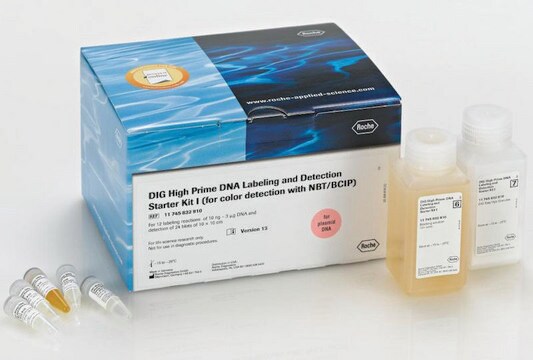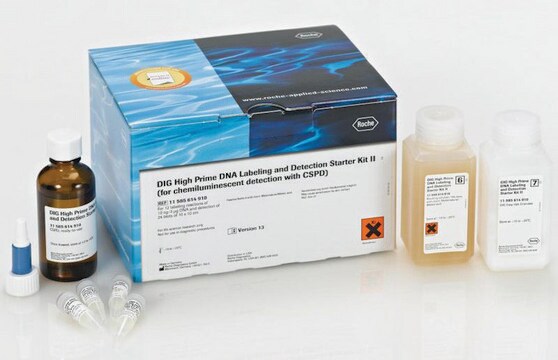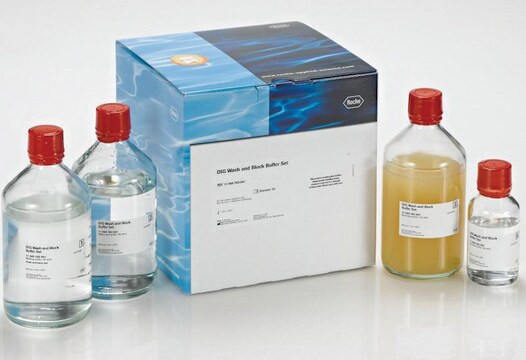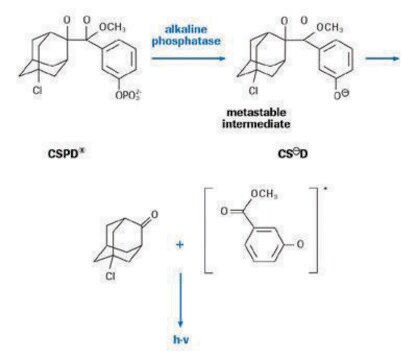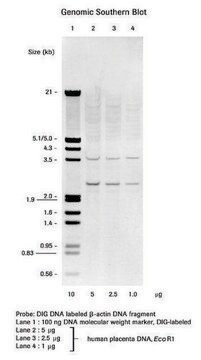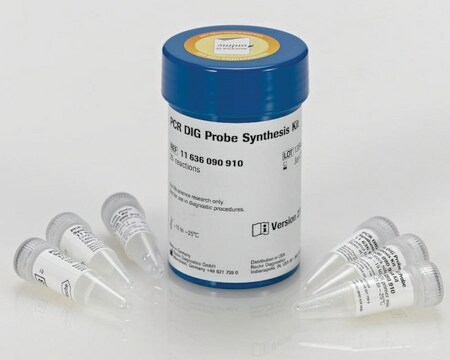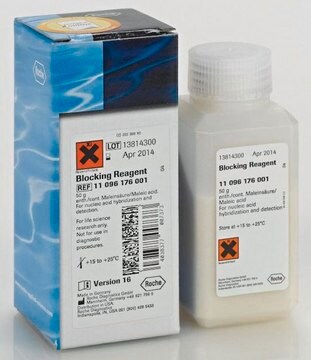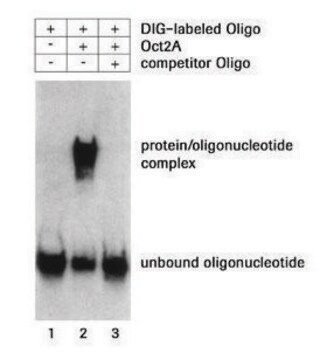11175041910
Roche
DIG Nucleic Acid Detection Kit
sufficient for 40 blots (10 cm x 10 cm each), kit of 1 (5 components), suitable for hybridization, suitable for Northern blotting
Sinônimo(s):
DIG system
About This Item
Produtos recomendados
uso
sufficient for 40 blots (10 cm x 10 cm each)
Nível de qualidade
embalagem
kit of 1 (5 components)
fabricante/nome comercial
Roche
características do produto alternativo mais ecológico
Designing Safer Chemicals
Learn more about the Principles of Green Chemistry.
sustainability
Greener Alternative Product
técnica(s)
Northern blotting: suitable
Southern blotting: suitable
hybridization: suitable
categoria alternativa mais ecológica
, Aligned
temperatura de armazenamento
−20°C
Descrição geral
Aplicação
- Southern blots
- Northern blots
- Other nucleic acid blotting applications
- In situ hybridization applications
- Southern blots
- Northern blots
- Other nucleic acid blotting applications
- In situ hybridization applications
Características e benefícios
Embalagem
Princípio
Nota de preparo
Working concentration of conjugate depends on application and substrate.
Storage conditions (working solution):
- Anti-Digoxigenin-AP Conjugate (vial 3): 2 to 8 °C, it is stable for 12 months at this temperature
- NBT/BCIP (vial 4): 2 to 8 °C, stable
Note: During shipment of the kit on dry ice, a precipitate may occur which is dissolved by briefly warming to 37 °C - The blocking reagent (vial 5) is stable for 36 months and can be stored dry at 4 to 8 °C.
- Autoclaved stock solution can be stored for several days to a week either unopened at 15 to 25 °C or at 4 to 8 °C after opening. Alternatively, it can be stored in aliquots at -15 to -25 °C for up to 6 months.
Somente componentes do kit
- DIG-labeled Control DNA 5 µg/ml
- DNA Dilution Buffer, [50 μg/ml] fish sperm DNA
- Anti-Digoxigenin-AP Conjugate antibody 750 U/ml
- NBT/BCIP, 50x stock solution 50x concentrated
- Blocking Reagent
Código de classe de armazenamento
11 - Combustible Solids
Classe de risco de água (WGK)
WGK 3
Ponto de fulgor (°F)
does not flashNot applicable
Ponto de fulgor (°C)
does not flashNot applicable
Escolha uma das versões mais recentes:
Já possui este produto?
Encontre a documentação dos produtos que você adquiriu recentemente na biblioteca de documentos.
Os clientes também visualizaram
Artigos
Digoxigenin (DIG) labeling methods and kits for DNA and RNA DIG probes, random primed DNA labeling, nick translation labeling, 5’ and 3’ oligonucleotide end-labeling.
Nossa equipe de cientistas tem experiência em todas as áreas de pesquisa, incluindo Life Sciences, ciência de materiais, síntese química, cromatografia, química analítica e muitas outras.
Entre em contato com a assistência técnica